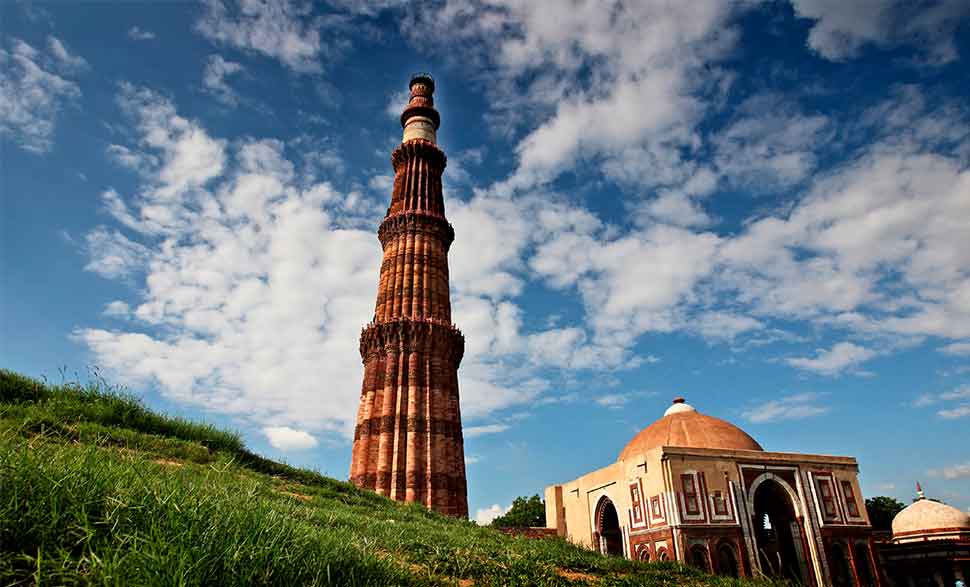Qutub Minar
The tallest minaret in India, Qutub Minar is among the iconic monuments of Delhi. Known as the ‘Tower of Victory’, the construction of the minaret also marked the beginning of the Muslim rule in India. Located at Mehrauli, around 3.9 million people visit the structure every year. Built from red sandstone and marble, the minaret is known for its history and architectural significance. The minaret and other monuments within the complex have been declared a UNESCO world heritage site.
A classic example of Indo-Islamic architecture, the foundation of the minaret was laid by Qutb-ud-din-Aibak in 1192. It was built to celebrate the victory of Mohammed Ghori over Rajput king Prithviraj Chauhan. However, Qutd-ud-din-Aibak died before completion of the minaret. Iltutmish continued construction and during his time three-storeys were added. Later in 1368, two more storeys were added by Firoz Shah Tughlak.
The minaret is 72.5 meters high and has five-storeys with a projecting balcony. The first three storeys are made of red sandstone, while the remaining two storeys with marble and sandstone. The exterior of the minaret is decorated with fluted columns, which have a 40 cm thick veneer of red sandstone. Another attraction of the minaret is its 397 steps, which leads to the balconies.
One can see verses from the Holy Quran carved in Kufic style of Islamic calligraphy on the walls of the minaret. The minaret was used to summon the faithful for the prayers in the Quwwat-ul-Islam mosque. Inscriptions further indicate repairs of the minaret carried by Sultan Sikander Lodi in 1503 after it was struck by lightning. In 1802, the minaret was severely damaged by an earthquake and was repaired by Major R Smith of the Royal Engineers, who replaced the capola with a Bengali-style chhatri. The chhatri was later removed by the Governor General Lord Hardinge in 1848. The chhatri stands at the left side of the minar and it’s called Smith’s folly.
FUN FACTS
Several movies have been shot at the Qutub complex. The song Chand sifarish from the Aamir Khan-Kajol starrer Fanaa was shot here. Dil ka bhanwar kare pukar song from the film Tere Ghar Ke Saamne starring Dev Anand and Nutan was shot completely within the Qutub Minar. It was the last movie to be shot inside the tower.



































